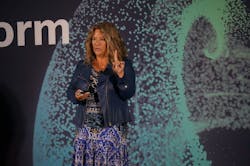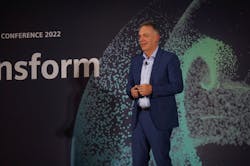Siemens Transitions to Become a Tech Company
The digital transformation isn’t just for companies using technologies from suppliers. It’s also changing the business of the suppliers themselves. At its recent media and analyst event, Siemens stated that they’re becoming a technology company.
Of course, it’s easy to say that Siemens has always been a technology company since all their products and services revolve around various types of technology. What Siemens means when they say they’re becoming a “tech company” is that their focus will be on software and how that software enables specific hardware capabilities as well as the design and ongoing development of the hardware products Siemens offers.
Specific actions being taken by Siemens as part of this transformation are:
- An acceleration of the company’s focus on small to medium-sized businesses (SMBs) and simplifying the delivery and operation of their products for this audience.
- Targeted investments in cloud and edge computing, additive manufacturing, artificial intelligence, and 5G.
Strategic PLM
A central aspect of Siemens new strategy can be seen in its new Xcelerator-as-a-Service (XaaS) offering. Siemens has offered Xcelerator (product and manufacturing design software) for years as a key component of its product lifecycle management (PLM) business. Offering XaaS makes the software more easily accessible to SMBs from a cost standpoint; it also offloads the installation, maintenance, and upgrade factors to Siemens—issues that most SMBs are not capable of efficiently supporting on their own.
Siemens’ acquisitions of Mendix for its low-code capabilities to help simplify its software products and Supplyframe to provide access to the multi-source electronics marketplace also figure into Siemens new strategy to help companies build a “comprehensive digital twin” to solve industry issues, regardless of vertical industry,” Nieke said.
The ability to deliver its PLM software modularly as a service is another important aspect of Siemens new vision of itself as a tech company. “The modular approach to software will drive an explosion in personalized applications,” said Tony Hemmelgarn, president and CEO of Siemens Digital Industries Software. “And low-code makes it possible to adapt software to how employees work.”
As-a-service focus
Siemens product categories currently modularized for as-a-service delivery include: IoT, mechanical design, performance engineering, PLM, printed circuit board system design, and manufacturing engineering.
Two years ago, Siemens began offering TeamcenterX (Teamcenter PLM software architected for the cloud and delivered as a service). According to the company, more than 50% of TeamCenterX users are now SMBs.
Manufacturers are “dealing with technical issues that weren’t thought of a decade ago,” said Hemmelgarn, “and this is driving new business models.” As an example of this, he noted Hyundai and Kia Motors plan to transition from being a purely automotive manufacturing company to a mobility company—including development of aircraft that can be used to bypass car traffic congestion.
A key to Hyundai/Kia’s transition is Xcelerator, said Hemmlegarn. “They selected Xcelerator for its model-based engineering and how it’s helping them integrate silos of people, processes, and divisions,” he said.
Tambe added, “Customers tell us they spend millions to get divisions to collaborate and share; XaaS delivers this end to end.”
About the Author
David Greenfield, editor in chief
Editor in Chief

Leaders relevant to this article:





